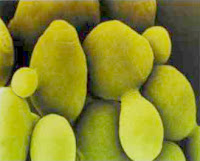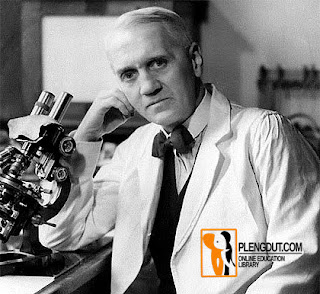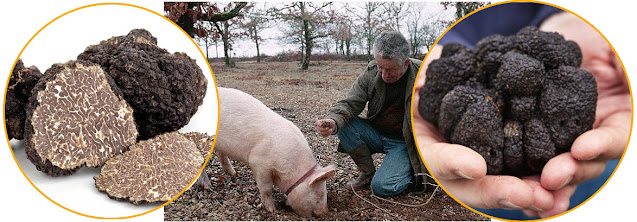Useful and Harmful Fungi
Many fungi are considered useful due to the valuable services their cultivation can provide for humanity, while others are considered harmful because they may inflict significant harvest losses or cause disease.
With the aid of photosynthesis, plants produce an annual biomass (the total mass of organic material) of several billion tons. Over time, this biomass needs to be broken down again so that all the nutrients locked up in the material can be made available for use by other organisms and returned into the cycle of nature. Without this decomposition process, life on Earth would quickly come to a standstill. Fungi play a very significant role in this recycling, particularly in the breakdown of wood and other plant materials.
 |
| Pict: Yeast is a single celled fungus that has been used throughout human history in the production of bread, wine, and beer. |
Fungi in the service of humanity
Humans have consumed fungi since ancient times, and fatal accidents have often occurred due to the potent toxins found in some species. On the other hand, the production of bread, wine, and beer-depicted in tomb art dating as far back as ancient Egypt-would not have been possible without the use of fungi.
Moreover, there are now a number of commercial prod- ucts that are produced on a large scale with the aid of fungi, such as citric acid or vitamin B2, and of course antibiotics, such as penicillin.
Disease causing fungi
There are a number of fungi that can be dangerous for humans; these include Cryptococcus neoformans, which can cause meningitis and is especially dangerous to people with a weakened immune system. If left untreated, this disease is nearly always fatal. Less dangerous, but still unpleasant, are fungal infections of the skin, such as foot fungus (athlete's foot).
Fungi that can trigger diseases among plants, such as loose smut (Ustilago avenae), used to cause harvest losses of up to 90 percent in the giant monocultures of North America. Coffee rust (Hemileia vastatrix) was the main cause behind the demise of the entire coffee production industry in Sri Lanka during the 19th century, with the result that there was a complete conversion to the cultivation of tea instead.
THE DISCOVERY OF PENICILLIN
In 1928, the bacteriologist Alexander Fleming made a discovery that piuved to be one of the most significant in the history of medi cine. He observed that a bacterial culture, con taminated by a fungus, had formed a narrow zone around it without bacteria. His assump- tion that the fungus was releasing a substance that inhibited growth proved correct, and this metabolic substance, Penicillin, introduced the age of antibiotics.
 |
| Pict: An incidental discovery by Alexander Fleming in his laboratory changed medicine. |
SEARCH FOR TRUFFLES
Among humans, the most desired of the edible fungi are truffles, which are considered a delicacy and can be very expensive. The high cost of these fungi is mainly due to the fact that they grow under the soil sur- face and therefore can be difficult to find. However, animals with sensitive noses can detect the strong odor of truffles. Therefore, truffle collectors use pigs or specially trained sniffer dogs to detect these valuable delicacies hidden in forests.
 |
| Pict: Although a number of fungi have been beneficial in human history, others may contain dangerous toxins that are poisonous to humans. |
 |
| Pict: People put the highly sensitive noses of pigs to use to help them locate buried truffles. |
